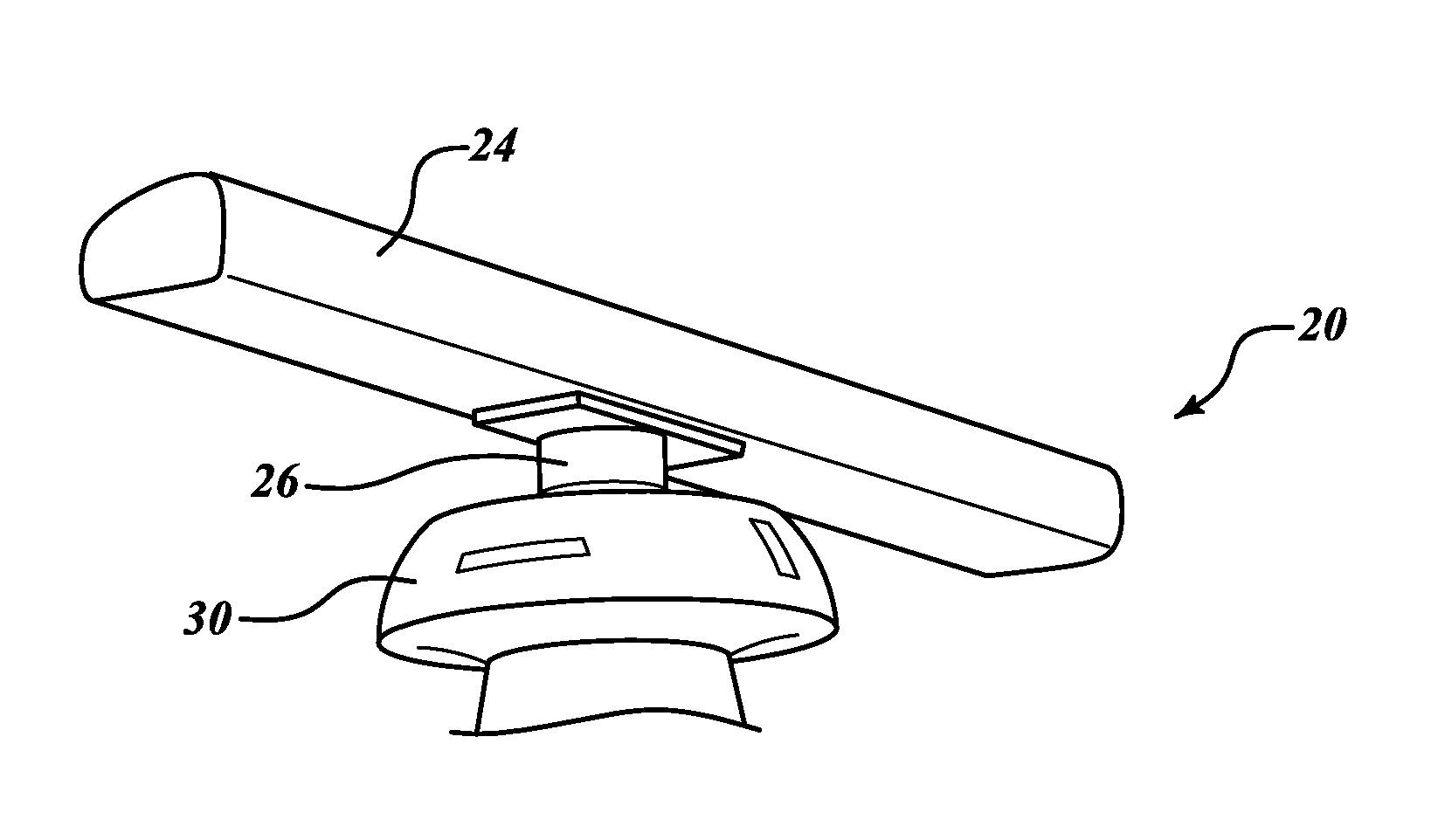Single-antenna fm/cw marine radar
a single-antenna, marine radar technology, applied in the direction of antennas, linear waveguide fed arrays, antenna adaptation in movable bodies, etc., can solve the problems of high cost of navico systems, failure to generate ultra-linear frequency modulation with exceptionally low phase noise, and great difficulty in dealing with exceptionally short ranges of a few feet within confines, etc., to achieve the effect of improving the probability of detection at sea
- Summary
- Abstract
- Description
- Claims
- Application Information
AI Technical Summary
Benefits of technology
Problems solved by technology
Method used
Image
Examples
Embodiment Construction
[0022]FIG. 1 is a perspective view of an exemplary single antenna radar device 20. The radar device 20 includes a motor case mounting base 30, an antenna radome 24, and a waveguide rotary joint 26. The waveguide rotary joint 26 allows the antenna radome 24 to rotate about the base 30.
[0023]In one embodiment, the rotary joint 26 provides data and power connections between the base 30 and a single antenna (not shown) within the antenna radome 24. In one embodiment, data transfer includes one or more of capacitive, fiber optic, or inductive transfer. The size and gearing on the rotary joint 26 are selected to provide adequate wind- and shock-loading protection. In the preferred embodiment, the rotary joint 26 is a waveguide rotary joint that conducts the transmitted signal to the antenna (located within the radome 24), receives signals from the antenna and supplies the received signal to the receiver as shown in FIG. 2.
[0024]The single antenna is used for both transmit and receive mode...
PUM
 Login to View More
Login to View More Abstract
Description
Claims
Application Information
 Login to View More
Login to View More - R&D
- Intellectual Property
- Life Sciences
- Materials
- Tech Scout
- Unparalleled Data Quality
- Higher Quality Content
- 60% Fewer Hallucinations
Browse by: Latest US Patents, China's latest patents, Technical Efficacy Thesaurus, Application Domain, Technology Topic, Popular Technical Reports.
© 2025 PatSnap. All rights reserved.Legal|Privacy policy|Modern Slavery Act Transparency Statement|Sitemap|About US| Contact US: help@patsnap.com



